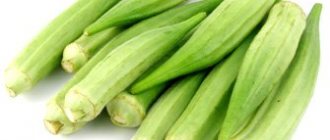| Benefits How to eat Contraindications Growing How to choose Hybrids |
Pomelo is called a large citron, a swollen lemon, and even a melon apple. Where the first two associations came from is quite understandable, because the exotic fruit belongs to the citrus fruits, but the last name is apparently connected with its shape and size, since neither in taste nor in internal content the fruit is completely similar to either an apple or an apple. melon. It is the largest and “dryest” among its citrus counterparts. Its pulp contains the most elastic fibers - up to 11%. The taste of pomelo is slightly bitter, like grapefruit, but in general terms it is characterized as sweet and sour. The spherical or pear-shaped fruits can grow up to 30 cm in diameter, and their weight can reach 10 kg. Such giants are not found on the shelves of our stores; the maximum is about 1–1.5 kg.
Photo: ©
In open space, a citrus tree can grow up to 10–15 m in height. Its fragrant white-yellow flowers appear singly or in clusters. The pomelo fruit has a thick skin that protects 11–18 segments wrapped in thin skin. They, in turn, hide entire colonies of edible capsules with juice, which are, in fact, fruit pulp. Each slice contains seeds, their number depends on the type of citrus fruit.
It is assumed that the homeland of pomelo is Malaysia. The plant is successfully cultivated in Thailand, as well as in India, southern China, Japan, Israel and Vietnam. The ripening season for the fruit is November-February. Our amateur gardeners have learned how to grow small trees at home and even get fruits.
Photo: © Judgefloro
What kind of fruit is this and where does it grow?
The evergreen citrus tree pomelo has a spherical crown and can reach a height of 15 m. Its fruits have orange, green, and yellow peel colors. The pulp of the fruit is:
- reddish;
- yellow;
- white;
- green.
Since sheddock is considered the largest citrus fruit, its diameter can reach 30 cm and its weight can range from 0.5 to 2 kg. The fruit has a characteristic aroma, sweet and sour taste with light notes of strawberry and pear. Pomelo is grown in China, Thailand, Japan, Israel, India, Vietnam and the USA (California).
Pomelo is not a grapefruit hybrid. It is considered an independent species, like an orange or lemon. Sweetie is a fruit obtained by crossing pomelo and grapefruit.
Varieties
Types of pompelmus differ in the color of the pulp and peel, taste and dimensions:
- Pink is the most juicy, sweet and healthy, but contains a large number of seeds.
- Red is distinguished by its small size and sour-bitter taste; the outside is covered with green skin.
- White has pale yellow flesh when cut. The fruits are large, sweet, not very juicy.
Pink variety of fruit
How many calories and nutrients does it contain?
The energy value of citrus is 38 kcal per 100 g of product, of which:
- proteins – 0.76 g;
- fat – 0.04 g;
- carbohydrates – 8.62 g;
- water – 89.1 g;
- fiber – 1 g.
The healing properties of sheddock are due to the high content of vitamins, minerals, antioxidants, pectin, enzymes and flavonoids.
| Chemical composition (per 100 fruits) | Amount, mg |
| Potassium | 216,0 |
| Phosphorus | 17,0 |
| Calcium | 4,0 |
| Magnesium | 6,0 |
| Sodium | 1,0 |
| Iron | 0,11 |
| Manganese | 0,017 |
| Zinc | 0,08 |
| Copper | 0,048 |
| Ascorbic acid (vitamin C) | 61,0 |
| Thiamine (vitamin B1) | 0,034 |
| Riboflavin (vitamin B2) | 0,027 |
| Pyridoxine (vitamin B6) | 0,036 |
| Niacin (vitamin PP) | 0,22 |
In citrus, not only the pulp is valuable, but also the peel. It contains vitamin P, which fights diseases of the gastrointestinal tract and normalizes estrogen levels in the body. The peel has a pleasant smell, but a bitter taste. It is dried and then used as an additive to hot drinks.
Find out also about the benefits and harms of the exotic durian fruit
Dietetics
Possessing such amazing beneficial qualities, the fruit, with its wide distribution, was immediately taken note of by nutritionists and those wishing to lose weight.
- Shaddock is an excellent fat burner, containing enzymes that break down fats.
- A small amount of pulp quickly satisfies the feeling of hunger, and the coarse fibers that make up the membranes of the fruit are not digested by the stomach.
- Collecting into a ball, the fibers act like sandpaper, cleansing the stomach and intestines of unnecessary deposits.
When you are on a diet and everything tasty is forbidden, the miracle fruit will replace any sweetness.
The diuretic properties of citrus will help get rid of excess water in the body in a strikingly short time, and the readings on the scale will pleasantly surprise you.
What are its benefits and properties?
Due to the presence of a multicomponent composition, the fruit has a healing and restorative effect on the body:
- potassium is involved in the prevention of osteoporosis, increasing bone density and ensuring muscle elasticity;
- vitamin C and collagen prevent bleeding gums and strengthen teeth;
- the tandem of potassium and ascorbic acid helps the absorption of iron and prevents the development of anemia, which is especially important during pregnancy;
- fiber restores intestinal function and improves peristalsis;
- enzymes promote fat burning, which is very important when losing weight;
- magnesium normalizes blood pressure, improves blood circulation, minimizes the load on the heart;
- phosphorus and calcium increase brain activity, relieve irritation, tone the nervous system;
- antioxidants protect the skin from exposure to UV rays, accelerate cell regeneration, and wound healing.
Citrus contains ascorbic acid and thiamine, which restore hair from roots to ends. Eating the fruit prevents hair loss and helps eliminate hair fragility.
The enzymes contained in the fruit promote fat burning, which is very important when losing weight.
Benefits for diabetes
The glycemic index of pomelo is no more than 30 units, which is below the maximum value for people with type 2 diabetes. The fruit can be used in the complex treatment of the disease, to relieve symptoms and control pathology. Patients are advised to regularly consume citrus juice and pulp, as its composition helps lower blood sugar levels.
Why should it be included in a woman’s daily diet?
There are many reasons why the fair sex is recommended to regularly consume pomelo:
- fiber helps cleanse the intestines and improves skin condition;
- fruit acids strengthen the nail plate and heal cuticles;
- Nutrients saturate the body of a pregnant woman, strengthening the immune system and ensuring the full development of the fetus.
In addition, rubbing the skin with freshly squeezed fruit juice will help restore firmness, elasticity and velvety to the skin.
What is useful for men
The introduction of sheddock into the diet of representatives of the stronger sex promotes:
- strengthening the immune system;
- saturation with useful substances;
- charge with vital energy;
- eliminating inflammation of the genitourinary system.
Pomelo also helps fight hangovers by having a detoxifying effect on the body.
Pomelo is a plant-based aphrodisiac that increases libido and also has a beneficial effect on potency.
Fresh juice and pomelo pulp
Contraindications for eating pomelo fruit
Citrus is not recommended for people who have:
- liver or kidney diseases;
- individual intolerance to ascorbic acid;
- chronic hypotension.
The daily intake of fruit for adults is 100-150 g. Excessive consumption of pomelo can lead to stomach upset, difficulty breathing, dizziness or nausea. It is not recommended to give citrus juice or pulp to children under 3 years of age, as this may lead to the development of an allergic reaction or diarrhea.
Use of pomelo
In medicine, pompelmus is included in an individual therapeutic or restorative diet to normalize intestinal function and blood counts, stabilize blood pressure, lose weight, and improve hormonal status. Pomelo juice, heated to 40 degrees with the addition of raspberry or oregano leaves and licorice root, perfectly helps with acute and chronic bronchitis, accompanied by a wet cough.
Cosmetology specialists love pomelo for its excellent moisturizing and nourishing properties. Masks with honey are made from the pulp of the fruit to reduce sebum production and deeply hydrate the skin.
And yet the main area of application of pomelo is cooking. The fruit is eaten fresh, in smoothies and light salads, included in exotic dishes, and jam and candied fruits are made from its peel, which can be added to hot and cold drinks.
How to choose a ripe fruit
There are no special rules for choosing a pomelo, but when purchasing it, it should be evaluated like other citrus fruits. The fruit should be elastic, with a pleasant aroma. You should refuse to buy citrus if:
- the peel has damage and black spots;
- the yellow color is uneven, the presence of green areas predominates;
- the surface of the fruit is too soft and after pressing there is a dent;
- there are growths on the specimen;
- there are dark maroon dots on the skin, indicating the use of chemicals during cultivation.
It is not recommended to buy pomelo with signs of rotting or pest damage. Such specimens may have an unpleasant aftertaste and bitterness unusual for the fruit. Substances that are produced during the decay of the pulp can be harmful to health.
Contraindications
Pomelo is not recommended for use if the stomach has high acidity, so for those who have gastritis, gastric or duodenal ulcers, it would be better to avoid the fruit or eat it in moderate doses. The tropical fruit should be excluded from the diet for people suffering from serious kidney and liver diseases.
Warning: Like any citrus fruit, pomelo can cause an allergic reaction, and drinking juice with medications or alcohol can have side effects that increase or decrease the effect of the latter.
Young children should not be given fruit, and they should begin to get acquainted with it gradually, no earlier than 3–4 years old. The first piece should be no larger than a centimeter cube, and only if there is no allergic reaction, the portion can be slightly increased next time. It is better for pregnant and nursing mothers not to use pomelo, because the allergen can manifest itself on the fetus or defenseless infant.
Photo: © ivabalk (Free Pixabay License)
How to eat fruit correctly
Following a simple cleaning procedure will help you to fully enjoy the pleasant taste of the pomelo. How to clean a broom:
- Pour boiling water over. This will help remove wax from the surface and make peeling easier.
- Clean the fruit. Using a small knife, you need to trim the skin in a spiral or make cuts into slices. Then pry the peel with your fingers and remove it from the fruit.
- Remove films. Inside, the pulp is covered with a white film, which can also be seen on tangerines. It worsens the taste of the pomelo, giving it a bitter taste, therefore, it is recommended to remove it.
- Cut the fruit. Unlike grapefruit or orange, the fruit is easy to peel. After peeling, it can be cut into portions with minimal loss of juice.
It is worth considering that some specimens may contain inedible seeds, which should also be removed from the pulp before consumption.
What can you combine with in cooking?
Pomelo is an independent product that is intended to be taken raw. It will perfectly replace dessert or become a harmonious addition to dietary dishes. Citrus can be used to prepare:
- salads;
- cocktails;
- cold drinks;
- sauces;
- marinades for meat and fish;
- fillings for baking.
The pulp of the fruit goes well with chocolate, honey, nuts and various fruits. Pomelo is also suitable for the trendy keto diet.
Residents of Asia use pomelo peel not only for medicinal purposes, but also for making jam, candied fruits and marmalade.
Salad with pomelo and shrimp
This is a popular dish of Pan-Asian cuisine, the calorie content of which is about 300 kcal per serving.
Ingredients for salad (2 servings):
- Large shrimps – 6 pcs.
- Pomelo – 1 pc.
- Cilantro, mint, basil - 1 branch each
- Starch – 100 g
- Vegetable oil – 150 ml
For salad dressing:
- Fish sauce – 1 tsp.
- Lime juice – 1 tsp.
- Chili paste – 5 g
- Brown sugar – 12 g
For the mint sauce:
- Lime juice – 1 tsp.
- Mint – 1 sprig
- Water – 20 g
- Tomato paste – 1 tbsp.
- Sweet chili sauce – 50 g
Step by step recipe:
- Prepare mint sauce. Place all ingredients in a blender bowl. Grind until smooth.
- Prepare salad dressing. Mix all ingredients in a small container.
- Peel the pomelo from the skin. Divide into segments.
- Dilute starch with water until liquid.
- Dip pre-cleaned shrimp into the mixture. Deep fry.
- Heat mint sauce in a dry frying pan. Place shrimp in it. Lightly simmer.
- Place the pomelo segments on plates, 90 g per serving.
- Add mint leaves, cilantro, basil. Place shrimp on top and drizzle with salad dressing.
Pomelo salad with shrimp
The dish has a light, unique taste. The salad should be consumed immediately after preparation, excluding storage in the refrigerator.
Cooking
Of course, it is most beneficial to eat the fruit pulp fresh. In China, pomelo has long been added to national cuisine. Nowadays it’s easy to find interesting recipes using citrus in cooking.
Here are just a few examples of its use:
- Bake with fish, meat, poultry and vegetables;
- Sauces are prepared from it;
- As a filling for baked goods;
- Add to fruit, vegetable and meat salads;
- Preparing jam and jam;
- Making marmalade;
- In dried form, they are added to compotes, tea and other drinks.
Please note that with the addition of pompelmousse to familiar dishes, they acquire a new and unique taste!
Is it difficult to find in Russian stores?
The sales season in the country's supermarkets starts in February. Citrus is most often sold in a special net that protects the fruit from damage and rotting. The weight of the fetus is about 1 kg.
| Name of product | price, rub. |
| White pomelo (China), 1 kg | 109,00 |
| Red pomelo (Vietnam), 1 kg | 143,00 |
| Candied pomelo (Thailand), 1 kg | 430,00 |
“Visiting with your broom” is an interesting tradition that exists in China. Among local residents, the fruit is considered the most valuable gift that brings success, abundance and happiness to the family. That is why it is customary here to give sheddock for the New Year or Christmas holidays.
Selection rules
The ripening time for pomelo in the tropics falls in the cold winter months of our climate - December, January, February. At this time of year, the body requires a shock dose of vitamins. By choosing a healthy and ripe specimen, we are guaranteed to obtain a source of healing properties.
- A healthy fruit has a matte, dry, and undamaged peel. Excessive shine is most likely the result of chemical treatment.
- The color is uniform, shades range from pale green to yellow. When choosing, you should pay attention to the weight: the heavier, the more ripe it is.
- Immaturity can be indicated by uneven coloring and the absence of a characteristic citrus smell.
In order for the citrus to acquire aroma and become sweeter, it is left for a day or two at room temperature. There is no need to worry: unpeeled fruit can be stored for a month without refrigeration, and in the refrigerator for 2 months.
If the pomelo is cleaned, it should be protected with film and kept in the refrigerator for no more than two days.
general description
The Latin name of the plant, Cītrus māxima, is quite justified - pomelo produces the largest fruits of all citrus fruits. The diameter of one can reach up to 30 cm, and it most often weighs 1-3 kg. There are varieties with giant fruits weighing up to 10 kg.
Pomelo fruit wrapped in plastic
The peel is thick (2-4 cm), porous, of medium density. The outside may be green, orange or light yellow (zest), the inside is white and spongy (albedo).
Under the peel, like all citrus fruits, there is juicy pulp in the form of slices. Most often it is pale yellow, there are varieties with greenish, pink, yellow-pink inside. Between the slices there is a white dense film that tastes bitter. It is easily removed when cutting, releasing shiny, juice-rich segments consisting of many juicy “rods” separated by a thin shell. The taste of the pulp is sweet and sour, with slight notes of bitterness, refreshing, not pronounced.
The longer the fruit lies picked, the less juicy it becomes. The fruits of many varieties of pomelo initially contain less juice per unit weight than lemons, oranges, and grapefruits. The pomelo season is the winter months (January-February), when the fruits are harvested, and the fresh harvest is the juiciest.
There is an opinion that pomelo is a citrus hybrid. In fact, pomelo is a separate type of citrus fruit, completely independent and with a long history. Together with the orange, it became the ancestor of the grapefruit. Later, pomelo was crossed with white grapefruit to create sweetie. Today, breeders continue to work with a variety of citrus fruits, including pomelo, which has many advantages.











